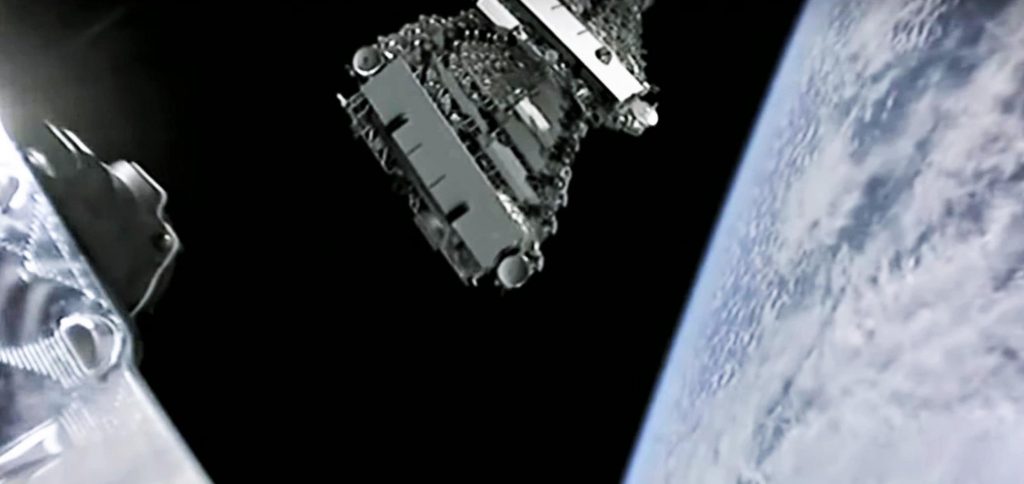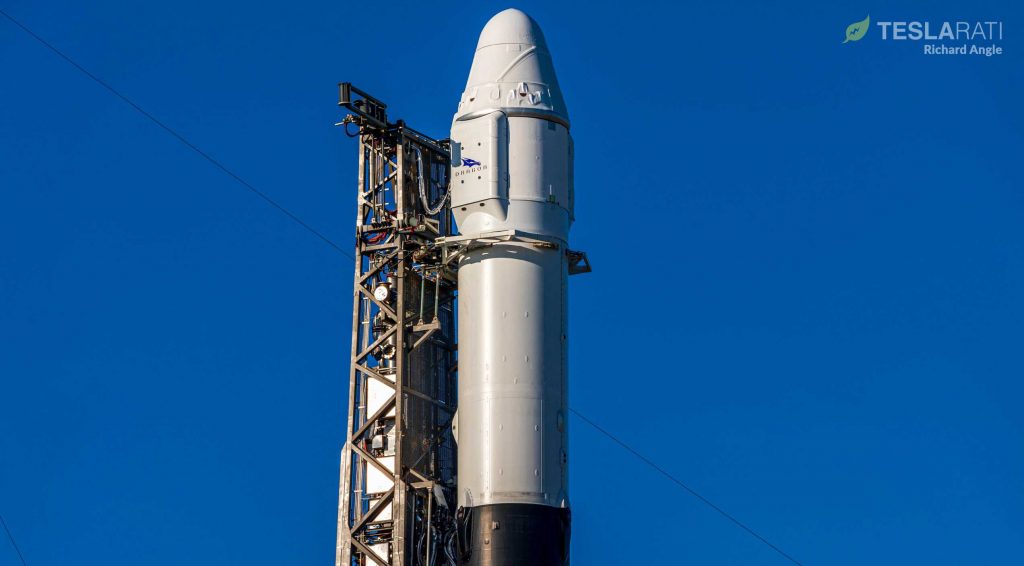CEO Elon Musk says SpaceX is churning out Starlink satellites faster than it can launch them, the best sign yet that the company is having some amazing success in what is already the most productive satellite factory in history.
Since SpaceX first revealed its radical flat-satellite Starlink design, stacking approach, and deployment mechanism back in May 2019, the company has successfully launched an incredible 300 satellites, ~290 of which are still functioning as intended. At this point, that means that Starlink is likely the largest satellite constellation in history by a factor of two, crushing the second largest’s ~150 satellites. Perhaps even more significant is the mass of SpaceX’s nine-month-old constellation, currently standing at more than 75 metric tons (165,000 lb) of satellites in orbit.
Despite the already awe-inspiring scale of SpaceX’s satellite internet constellation, the company’s Starlink factory is already so successful that the company is now unable to launch the spacecraft as quickly as they’re built. Given that SpaceX has maintained an average of ~1.3 Starlink launches per month since November 2019, many of which suffered significant delays as a result of weather or minor hardware issues, this likely means that SpaceX is building dozens more satellites than it can launch, probably creating its own internal launch manifest backlog as those surplus spacecraft pile up.
Considering the fact that SpaceX has gone from two prototype spacecraft to the proud owner of the largest satellite constellation in history in less than nine months, the fact that the company’s Starlink factory is already outpacing its launch capacity is arguably a good sign. While it’s likely that weather and hardware-related launch delays on the last few Starlink missions have made it harder than expected to stick to plans for an average of two Starlink launches per month, SpaceX isn’t falling that short of its classically lofty ambitions (a bit less than one Starlink launch every two weeks).

SpaceX may now be the first company in history to chronically suffer from its factories building more satellites than it can launch in a given time frame. In those terms, a surplus of flight-ready satellites is actually a highly desirable “problem” to have. Competitor OneWeb, for example, was forced to delay its first 34-satellite launch by two months after its new Florida factory suffered several production delays.
SpaceX, on the other hand, has to build almost twice as many satellites per launch, has effectively launched 35% of OneWeb’s entire constellation (~650 satellites) in the last three months alone, and still has an apparent backlog of satellites ready to head to orbit. As of March 3rd, SpaceX’s fifth launch of 60 upgraded Starlink v1.0 satellites and sixth launch overall (Starlink V1 L5 or Starlink-6) is scheduled to lift off no earlier than March 14th after slipping from February 14th, March 4th, and March 11th. The mission’s most recent delays were caused by an issue discovered in the Falcon 9 second stage assigned to launch Cargo Dragon’s CRS-20 mission, triggering SpaceX to swap it with Starlink V1 L5’s unaffected second stage.

After Starlink V1 L5, SpaceX has more batches of 60 Starlink satellites that – given Musk’s comments – might already be stacked and ready for flight, both of which could potentially fly in March or April. In the midst of its Starlink launch ambitions, SpaceX has scheduled Florida’s first polar launch in half a century on March 30th, followed by a historic US Air Force launch and landing no earlier than (NET) April 27th.
If Cargo Dragon successfully lifts off this Friday, SpaceX will reach an average of ~1.9 weeks per launch, a cadence that – if maintained – would set the company up for at least 27 launches in 2020. With room for improvement after several weather-related days: so far, so good.
Check out Teslarati’s newsletters for prompt updates, on-the-ground perspectives, and unique glimpses of SpaceX’s rocket launch and recovery processes.

(adsbygoogle = window.adsbygoogle || []).push({});
<!–
–>
var disqus_shortname = «teslarati»;
var disqus_title = «SpaceX is building Starlink satellites faster than it can launch them»;
var disqus_url = «https://www.teslarati.com/spacex-starlink-more-satellites-than-it-can-launch/»;
var disqus_identifier = «teslarati-131577»;

